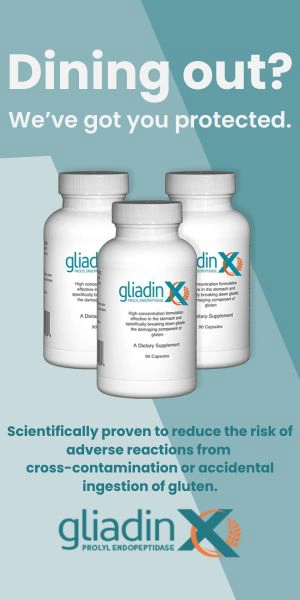Arthritis may be an allergic response to materials in the food supply. Diet revision may be helpful in reducing the activity of inflammatory arthritis and in some instances may halt the progression of the disease. There are many patterns of arthritis. A group of related joint and connective disorders have been called rheumatic diseases. All these diseases are immune-mediated, and all are expressions of inflammation in connective tissues. Inflammation damages joints and surrounding tissues resulting in loss of function and deformities. Variations in the patterns of these diseases reflect the many possibilities for immune damage to disturb and distort structure and function. Severity ranges from mildly painful, chronic activity to drastic, disabling disease. Rheumatoid arthritis, often severe and disabling, is the dominant rheumatic disease that can attack all joints in the body.
Rheumatoid arthritis is often considered to be an autoimmune disease. Our idea is that no disease is just internally generated and must involve outside contributions. Arthritis is often associated with inflammatory bowel disease. The mechanisms of food allergy link abnormal Gastrointestinal Tract (GIT) function with immune attacks on connective tissue. In all arthritic patients, normal GIT function should be rigorously sought by adaptive dietary adjustments.
Celiac.com Sponsor (A12):
In another study, 33 of 45 patients with rheumatoid arthritis improved significantly on a hypoallergenic diet. The authors concluded: Increasing numbers of scientific studies suggest that dietary manipulation may help at least some rheumatoid patients and perhaps the greatest need now is for more careful and well-designed research so that preconceptions may be put aside and role of diet, as a specific or even a nonspecific adjunctive therapy, may be determined.
Unfortunately, dairy products, wheat and its close relatives, oats, barley, and rye, have proved to be a major problem in the diets of our patients. There are many possible reasons for cereal grains to become pathogenic. Hypersensitivity mechanisms triggered by grain proteins, collectively called Gluten, are the likely cause of the illnesses related to intake of cereal grains. Gluten is a mixture of individual proteins classified in two groups, the Prolamines and the Glutelins. The prolamine fraction of gluten concerns us the most when grain intolerance is suspected. The prolamine, Gliadin, seems to be a problem in celiac disease; gliadin antibodies are commonly found in the immune complexes associated with this disease. Recently marketed grains, spelt and kamut, are wheat variants (despite claims to the contrary) and are likely to cause problems similar to other wheat varieties.
A wheat gluten mechanism has been studied in rheumatoid arthritis patients. The clinical observation is that wheat ingestion is followed within hours by increased joint swelling and pain. Little and his colleagues studied the mechanism, as it developed sequentially following gluten ingestion. Dr. Parke and colleagues concurred with this explanation of the gut-arthritis link in their report of three patients with celiac disease and rheumatoid arthritis. The mechanism involves several stages:
- GIT must be permeable to antigenic proteins or peptide fragments, derived from digested gluten.
- The food antigens appear in the blood stream and are bound by a specific antibody (probably of IgA or IgG, not IgE class), forming an antigen-antibody complex, a circulating immune complex (CIC).
- The antigen-antibody complex then activates the rest of the immune response, beginning with the release of mediators - serotonin is released from the blood platelets.
- Serotonin release causes symptoms as it circulates in the blood stream and enhances the deposition of CICs in joint tissues.
Once in the joint, the immune complexes activate complement, which in turn damages cells and activates inflammation. More inflammation results in more pain, swelling, stiffness, and loss of mobility.
Arthritis is usually treated with salicylates or related anti-inflammatory drugs generally referred to as NSAIDs. These drugs alleviate the terrible pain of active arthritis but do not favorably affect the outcome of the disease. All anti-arthritic medication can produce asthma or chronic rhinitis and a variety of allergic skin rashes. Gastrointestinal surface irritation, bleeding, and ulceration are routine problems of anti-arthritic medication.
The first attack of joint swelling and pain should be treated as an urgent problem to be solved. Inflammation may damage joints. Often NSAIDs and physiotherapy are the only treatments prescribed and inflammation is given every opportunity to ravage tissues. We have seen countless patients, just treated with NSAIDs, who progressed rapidly to a severe disabling disease, often with poor pain control. In unlucky patients, severe deformities of joints accumulate in the first few months of a severe attack. There is a trend to recommend more aggressive treatments, using drugs that impair the immune response. The best drug is prednisone, but it is seldom used because it has long-term side effects which scare both physicians and patients. Prednisone is often a magic drug that relieves terrible pain and suffering often in the first 48 hours of therapy. Beyond prednisone, there is a grab bag of immune suppressant drugs to treat arthritis-chloroquine, penicillamine, gold and methotrexate have emerged as the favored drug therapies. All these drugs have impressive side effects and great potential for toxicity.
Our preference is to try to stop the inflammatory activity as soon as possible with diet revision. All inflammation is likened to a fire. You get out the fire-extinguishers and go to work. No matter what pattern the immune attack assumes, our standard defense can be tried first. The Core Program method of diet revision is used. Food is replaced with an elemental nutrient formula, ENFood, for a clearing period of 10 to 20 days. Prednisone and/or NSAIDs are drug options during the clearing period and then the dosage is reduced after pain and swelling have subsided. Improvement is followed by slow food reintroduction (see Core Program). Each returning food is carefully screened for arthritis- triggering effects. You hope that food allergy caused the problem and that food control can be successful controlling the disease in the long- term. Nothing is lost by taking this approach and complete control of the disease can sometimes be obtained. If strict food control proves to be inadequate, then other drug treatments can be instituted.
End Notes/Sources:
- Carinini C, Brostroff J. Gut and joint disease. Annals of Allergy 1985;55:624-625.
- Darlington et al. Lancet Feb 1 1986;236-238.
- Keiffer M et al. Wheat gliadin fractions and other cereal antigens reactive with antibodies in the sera of of celiac patients. Clin Exp Immunol 1982;50:651-60.
- Little C, Stewart AG, Fennesy MR. Platelet serotonin release in rheumatoid arthritis: a study in food intolerant patients. Lancet 1983;297-9.
- Parke AI et al. Celiac disease and rheumatoid arthritis.
- Annals of Rheum Dis 1984;43:378-380.
- Voorneveld CR, Rubin LA Disease-modifying antirheumatic drugs: early use is better. Medicine North Amer. Oct 1991 3177-3184.















Recommended Comments